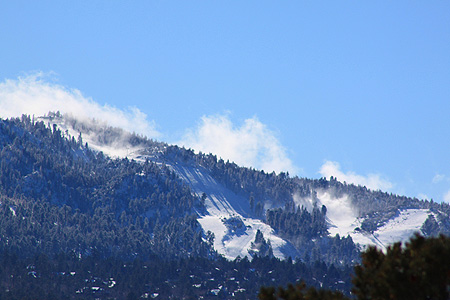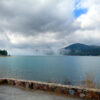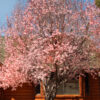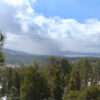Big Bear’s been hit with a blast of artic air and overnight temperatures have dropped into the single digits. If you haven’t done it already, it’s time to winterize your Big Bear home and avoid any costly damage that can occur when the temperatures drop. Here are a few tips for protecting your mountain home during the winter months.
Water Supply and Plumbing
Besides wrapping your pipes and insulating your home, there are several things you can do to protect your property from freezing temperatures. If you do nothing else when you’re away from your Big Bear property, turn off the main water supply. In the event of a power outage your heater will stop working and pipes will freeze and flood the house when it warms up. For extra protection, or if you decide to keep the water main turned on, turn off the interior water supply to the washer machine and behind the sinks and toilets. But remember, interior supply valves are notorious for failing under pressure. Take the time to learn how to turn off your water main.
After the water’s turned off, drain the pipes by turning on an exterior hose bib at the lowest part of your home. Some plumbers recommend turning on an upstairs faucet to allow water to flow more easily, but don’t forget to close the upper faucets after the water has drained. To avoid water freezing in drain traps, pour RV antifreeze down drains and into toilet bowls. Never use automobile antifreeze inside your home; it’s toxic and harmful to pets and the environment.
Water Heaters and Appliances
You have a few options with the water heater. Most units have a “Vacation” setting that you can use when you’re away for extended periods. Otherwise, you can just shut it down (turn to off) and attach a hose to the spigot at the bottom of your water heater to drain the water into the street.
If you plan on shutting down the heating system in your home (not recommended) you’re going to need to make sure your plumbing system and appliances are completely drained. This is where you should consider hiring a professional to assist you. The $300 to $400 you may spend is worth the peace of mind.
Part Two – Heat, Gas, and Electricity
Home Winterization and Energy Efficiency;
- All You Want To Know About Ventless Gas Heaters – Cut heating costs now by winterizing your home: Another way to cut home
- CFLs are better than incandescents – Tips on how to winterize your home · Himachal launches green policy on used
- Home Winterization: Preparing a Home For Winter | Home Project … – Winterization is the process of preparing a home for a winter storm, heavy snow and the harsh conditions of winter. Home winterization is usually performed in the fall before a winter storm brings snow and excessive cold. Home winterization protects against damage due to bursting water pipes, and from heat loss due to openings in the building envelope.
- Insulation R-Value- Increased Energy Efficiency | Home Project … – Insulation R-Value- Increased Energy Efficiency. Posted on November 13, 2011 by Doug Derry · Tweet · Delicious. Insulation R-Value – Energy Efficiency. As energy efficiency and energy conservation has become an increasing concern among …









Speak Your Mind